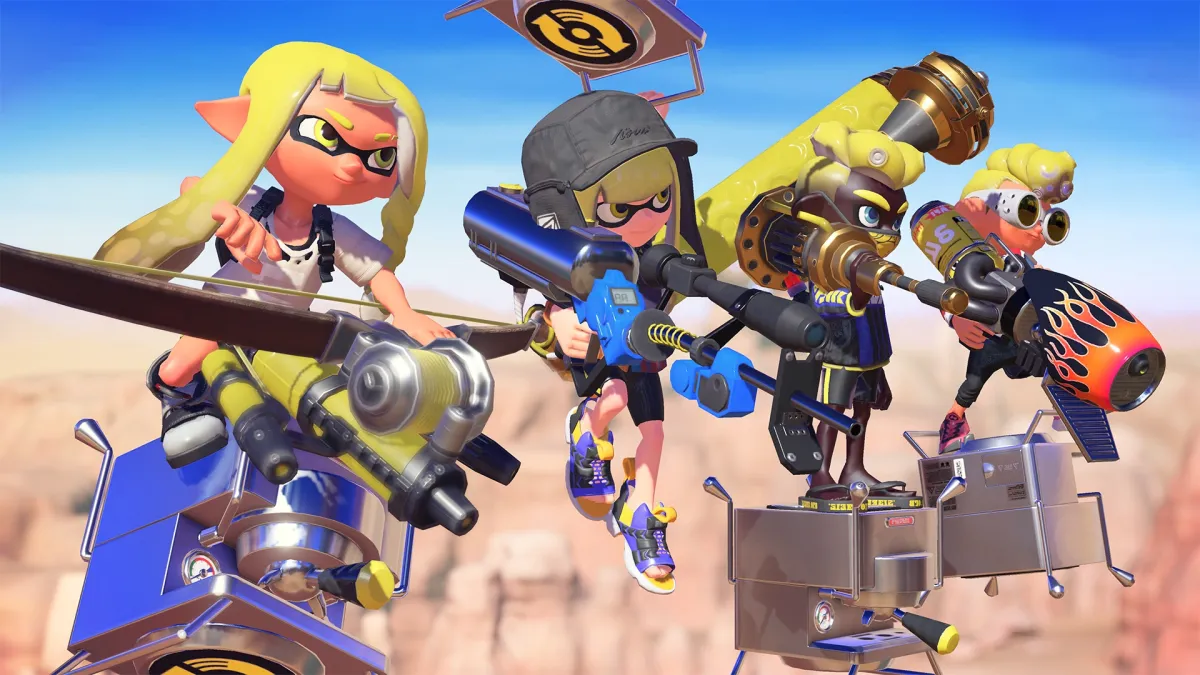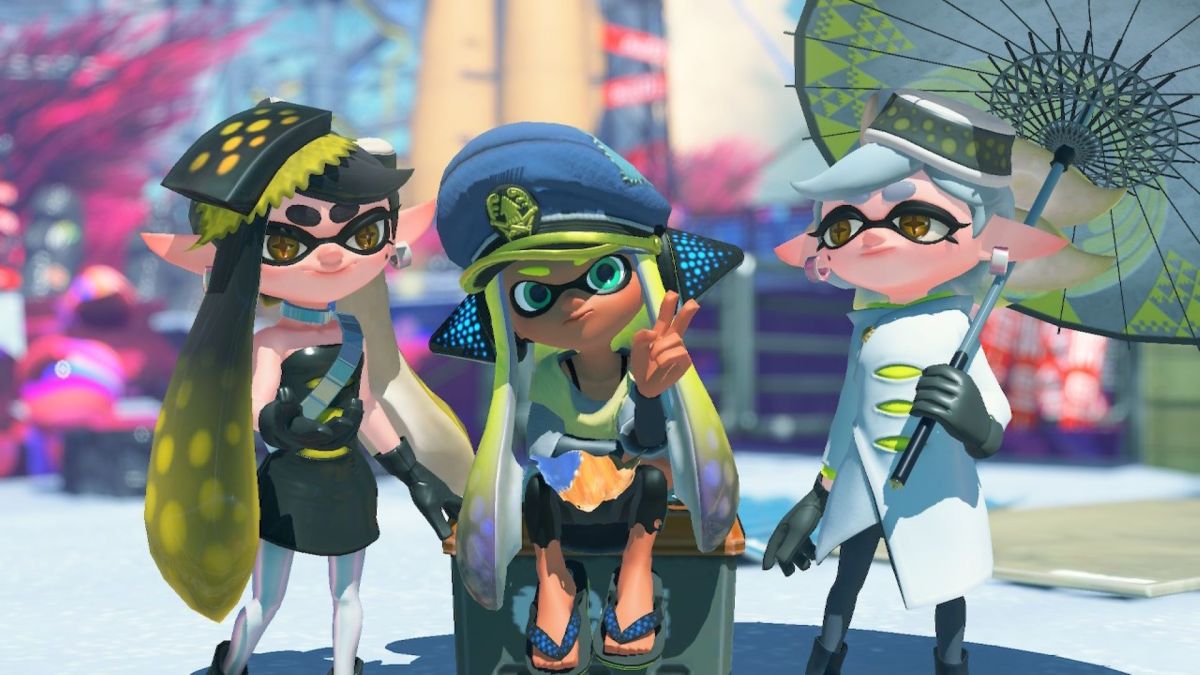For some beautiful reason, Nintendo, the company that is still charging $60 for Mario Tennis Aces, opted out of putting a full live-service monetization system in the franchise where it makes the most sense. Splatoon 3 has the basic skeleton of a live-service game without the actual cash store involvement and microtransactions that can end up preying on fans’ worst instincts. Given the massive sales numbers of this third game in the series, and the general longevity the game’s community has had, there must be some sort of devil on Nintendo’s shoulder whispering about adding loot boxes. Even though the most lucrative game mode, Salmon Run, is a clear metaphor for working an exploitative gig job, it’s genuinely fun to build up in-game riches without any premium battle passes to be found.
This isn’t to say that battle pass systems and microtransactions are inherently terrible, because they work well for plenty of games and their communities. These elements are obviously much more common in free-to-play games, but series like Call of Duty still cynically cram microtransactions into their full-priced titles as well. Still, seeing the framework of other shooters’ systems in Splatoon 3 shows how it can be a genuinely fun system when separate from the actual money aspect of it. Getting glimpses of new gear with cool designs and interesting abilities every day, leveling up your catalog to get new cosmetic rewards, and walking around Splatsville to see some of the players you were just in matches with are fun features and great palate cleansers after intense multiplayer matches.
There was also a welcome shift to how you spend money in Splatoon 3. In Splatoon 2, the cash you accumulated went towards buying both clothing (“gear”) and weapons. But new weapon unlocks are now handled with Sheldon Licenses, which you win by playing a few games with a new gun. This frees you up to save your funds for buying gear, upgrading or scrubbing abilities from them to make a new build, and embracing the style elements in the game.

I’ve never been interested in skins or gun designs because it always felt like a forced way to add monetization. Here though, it’s all for the fun of customization, so now I’m dressing up my locker, Inkling, and player tag like everyone else. They even have a gacha machine dubbed the “Shell-Out Machine” in the Splatoon 3 Battle Lobby that has pricey random drops, but this steered clear of any sinister gambling elements and was made approachable with a heavy discount on the first drop of the day. You just take your cheap shell, then keep it moving.
As for how you build up money, it’s most obviously a reward for player battles that is multiplied by your in-game performance and whether your team was victorious. You also acquire tickets through gameplay that boost your cash rewards for you and your team. The real financial titans in Splatsville, however, are the ones investing hours into Salmon Run, the co-op horde multiplayer mode first introduced in Splatoon 2. Salmon Run is hectic and definitely scales up quickly in difficulty as you rise the ranks, but it’s also a ton of fun and a great break from competitive play. You’re likely to get significant cash rewards too, as well as other great goodies like piles of ability chunks that let you design more specific gear builds for the other modes.
With that in mind, not 100% of the in-game wardrobe is available to every player, since there are a few exclusive gear sets locked behind amiibo purchases. But it’s doubtful that a piece of amiibo gear has ever been the deciding factor clutching a close ranked game of Tower Control. Nintendo will also be introducing a “large-scale paid DLC” down the road, but if it’s anything like the rollout of Octo Expansion for Splatoon 2, it will likely go over great with the community. Octo Expansion did come with some exclusive gear, but it was also packaged with 80 new missions to play to back it up. Splatoon 3 furthermore has a torrent of free updates coming down the pipe for two years post-launch, with fresh new catalogs dropping every three months and even league modes for the highest ranked players to duke it out.

Even if Splatoon 3 didn’t have all this stuff around the gameplay, it’s fun and frantic enough on its own to be worth playing still! It’s just interesting to see these defanged live-service features in the game, and they almost come off as a statement to other developers who have been embracing them.
All that said, Nintendo is no stranger to maximizing profits to the arguable detriment of its fans in other ways. The price of new characters for Super Smash Bros. Ultimate comes to mind. Sure, Piranha Plant is much more valuable than a gold gun skin, but each character costing $6, or a total of over $50 if you buy both Fighters Passes, is a high price for fans that want a competitive edge with the powerful new characters. The stubborn price fixing for its exclusive titles and Nintendo Switch Online + Expansion Pack hoping you’ll pony up a higher monthly fee to be able to play Ocarina of Time again are also pretty bald price gouges on Nintendo’s part.
But things like expensive premium memberships and marked-up remakes are just undeniable parts of the gaming ecosystem now. Even with Nintendo’s current monetization sins, the lack of microtransactions in Splatoon 3 means I won’t need my competitive shooter fix anywhere else for a while.






Published: Oct 28, 2022 12:00 pm